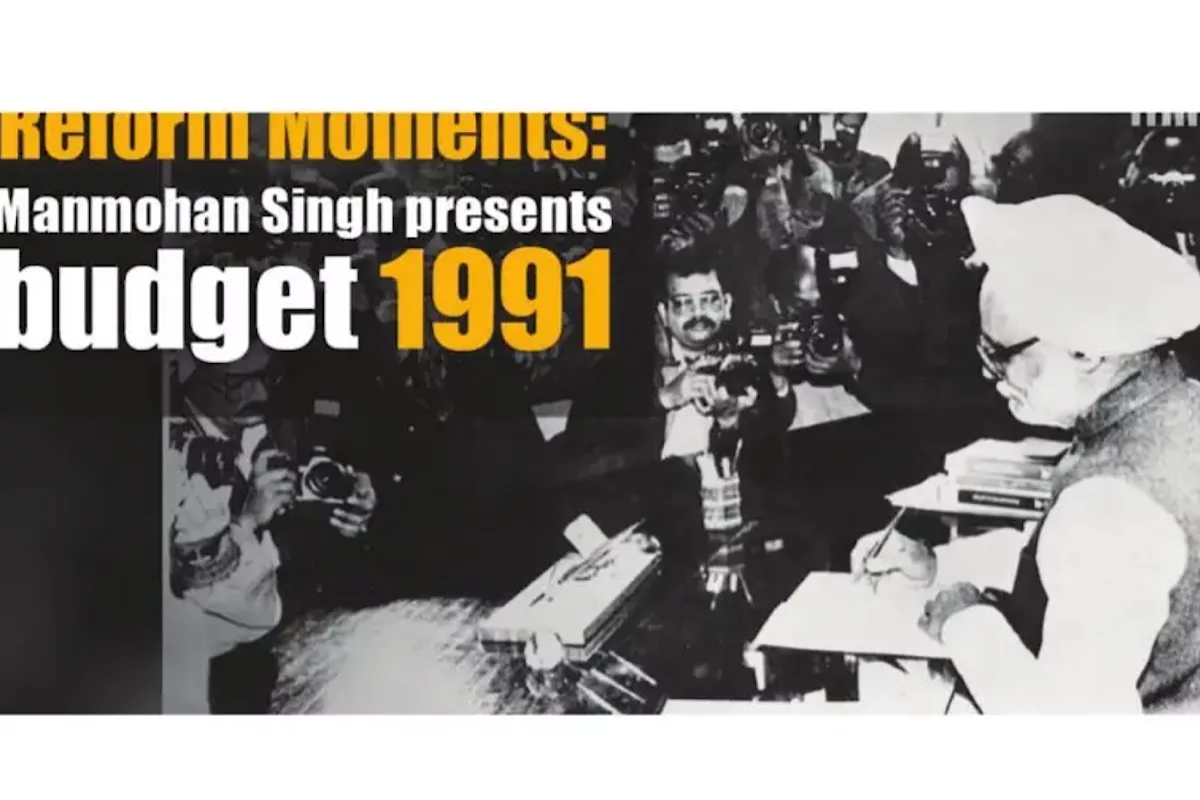In the summer of 1991, in his first budget speech as India’s Finance Minister, when Dr Mannmohan Singh presented his economic vision to rescue India’s faltering economy, it became clear that it was no ordinary moment. With a calm conviction, he spoke of structural reforms to resurrect the economy, of dismantling barriers that had shackled India’s growth for long, and of opening the doors to a new future. Then, as he concluded his speech, his voice carried the weight of history and hope ~ “Let the whole world hear it loud and clear. India is now wide awake. We shall prevail. We shall overcome.”
Little did the nation know that these words would echo across decades, marking not just the transformation of its economy but also a deep and lasting shift in its political and social landscape. The India of 1991 was a nation on the brink, teetering under the weight of fiscal profligacy and a massive trade deficit. Foreign exchange reserves dwindled to levels barely sufficient to cover a fortnight of imports, forcing the country to airlift gold reserves to secure emergency loans from international lenders.
Advertisement
Decades of economic overregulation under the License Raj, a labyrinthine system of permits and quotas, had created an economy where scarcity became the norm and entrepreneurship was viewed with suspicion. Such economic malaise reflected a deeper political problem ~ the state-controlled economy had created a political culture where electoral success meant promising more government control, more subsidies, and more protectionism. Singh’s reform proposals were revolutionary in both economic and political terms. By dismantling industrial licensing, slashing tariffs, welcoming foreign investment, and allowing the rupee to find its market value, he challenged the fundamental premise of post-independence Indian politics ~ that the state must dominate economic life.
Though widely seen as a reserved technocrat, Singh’s political genius lay in how he positioned these changes. Quoting Victor Hugo ~ “No power on earth can stop an idea whose time has come” ~ he framed liberalization not as submission to Western pressure but as India’s destined path to becoming a global economic power, providing crucial political cover for future reformers across party lines. This was significant because it allowed regional parties and opposition leaders to gradually embrace aspects of economic liberalization without appearing to abandon their socialist credentials. The success of these reforms reshaped political reality.
As Indian companies became globally competitive and a genuine middle class emerged, political discourse evolved. New industries, urban migration, and technological transformation changed the narrative. By the early 2000s, elections focused increasingly on governance, infrastructure, and economic growth. State leaders like Narendra Modi in Gujarat and Chandrababu Naidu in Andhra Pradesh built their political brands around development rather than traditional welfare politics, exemplifying the changed political economy Singh had architected.
His most enduring impact was establishing the “reform consensus.” While parties across the political spectrum continue to debate the pace and specifics of economic liberalization, no major political formation today advocates returning to the pre1991 model. For example, even when the BJP government repealed farm laws in 2021, it was presented as a tactical retreat rather than an ideological rejection of market reforms. This consensus has survived multiple political cycles and economic crises, demonstrating how deeply Singh’s ideas have become embedded in India’s political DNA. Singh’s tenure as Prime Minister (2004-2014) provides another perspective on his political influence.
He led the United Progressive Alliance (UPA) coalition and presided over unprecedented economic growth, benefiting from the global boom of the early 2000s. His administration introduced landmark social welfare policies, including MGNREGA and the RTI Act, reflecting his commitment to inclusive growth. However, this period also revealed the challenges of his leadership style. His quiet, technocratic approach often clashed with coalition politics, leading critics to label him a “reluctant politician” who struggled to assert authority amid competing interests, particularly during the corruption scandals of his second term. Yet Singh’s understated approach had distinct advantages. Unlike many populist lea – ders, he never sought to cultivate a personality cult, focusing instead on creating lasting institutions and frameworks.
This humility, while making him poli tically vulnerable, enabled profound systemic changes. For example, the implementation of GST, the bankruptcy code, and direct benefit transfers across different governments demonstrates how his initial reforms created a foundation for further institutional evolution ~ chan ges unthinkable in the pre-1991 era. Perhaps most significantly, Singh’s reforms redefined the relationship between business and politics in India. Pre-1991, this relationship was characterized by rent-seeking and patronage. The dismantling of the Licen se Raj forced a fundamental reset, gradually replacing the old patron-client relationship with a more transparent, market-oriented interaction. This shift, though incomplete, initiated a long-term process of reducing political corruption and crony capitalism, even as it created new challenges in regulating corporate influence in politics.
Manmohanomics transformed what was politically possible in India. Before 1991, advocating market reforms meant political suicide; today, promising economic growth and development is essential for political success. Today, Chief Ministers compete to attract investment, politicians across the spectrum discuss ease of doing business, and election manifestos promise start-up funds and innovation hubs. This transformation required his unique combination of economic expertise, political acumen, and personal integrity to convince a skeptical nation that embracing markets didn’t mean abandoning social commitments.
As India continues its development journey, future generations of political leaders will build on the foundations Singh laid, whether they acknowledge it or not. He demonstrated that governance transcends charisma, requiring instead the patient building of institutions and frameworks that outlast individual leaders. His legacy lies in understanding the delicate interplay between economics and politics, creating policies that not only transformed India’s economic landscape but fundamentally reshaped its political future. Through his leadership, he proved that good economics could be good politics, and that fundamental change was possible while preserving democratic values and social harmony.
The writer is Assistant Professor (Economics) at the Indian Institute of Management (IIM) Ranchi, and can be reached at: amarendu@iimranchi.ac.in. Views are personal









